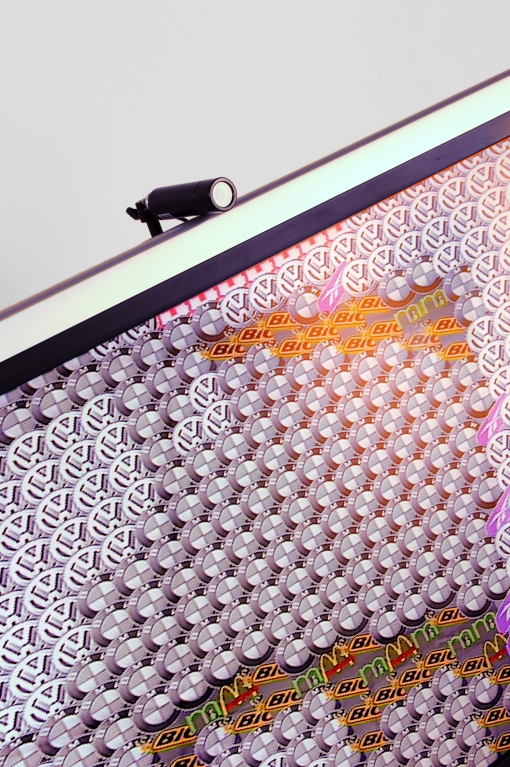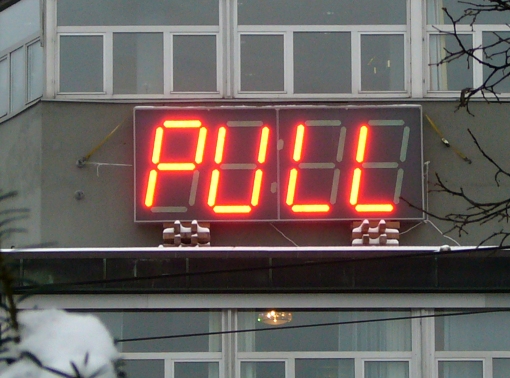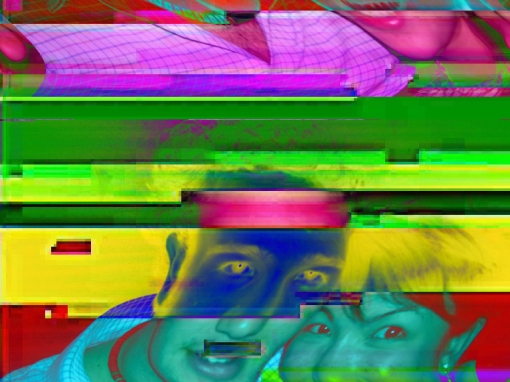Electroboutique (http://electroboutique.com) is a unique creative electronics production company, a media art gallery and an artist collective. Our products are developed in modern technologized forms: they are electronic devices and computer programs, being at the same time the pieces of actual art. Our products exist beyond national and cultural borders; they can be encountered in trendy interiors, as well as at contemporary art exhibitions and art fairs. Electroboutique’s amazing products merge together cool aesthetics and information technologies, modern design, pop-art and real-time data processing. Our techniques amalgamate open source and proprietary solutions with best media art inventions of past decades. We make up-to-date market-friendly art, following recent critical discourses. Pride ñ is a natural feeling of our products owners.
Keywords: commercial protest, consumer electronic art, device art, media art 2.0, interactive, audio-visual, crititainment, no-brain, real-time, plug-and-play.
Exhibited works:
COMMERCIAL PROTEST (2007. LCD TV, videocamera, supermarket trolley, custom electronics. Size variable)

It is difficult to protest these days against capitalism, especially if you are a member of capitalist society and enjoy all its benefits. Any convincing form of protest very soon gets appropriated by the system and starts being used for its sake: in politics, in advertisement, in design, etc. But we want to protest! – and offer the new, realistic form: Commercial Protest. We protest in the form of a critical but/and commercially suitable artwork. Commercial Protest reveals the essence of modern people; – it shows what we are all made of. A viewer sees her own portrait as a mosaics made out of transnational companies logos (variant: consumer goods). These images are globally recognizable and constitute the visual language of today. The supermarket cart that contains the TV set emphasizes the ugliness of the ultimately consumerist world. We protest against such state of things with this piece and set a fair price on it.
DIGILUCK (2007. LED display, acryl, custom electronics. 85x55x6 cm)

Today like never before, it is obvious that coincidence and chance play major roles in achieving a success. When an electronic clock displays such digit combinations as 11:11, 22:22, 3:33, etc, we involuntary start thinking about some significant fortuity. But how one could turn this fortuity into desired regularity? How one can catch good luck? Digiluck deconstructs the electronic clock by displaying animations in random order instead of searching for lucky numbers. This work does not tell what luck is or how it can be. Digiluck just rethinks the notion of time as taken for a norm conventionality.
OUT OF CONTROL (2008. Smashed LCD TV, custom electronics. Size variable)

The work explores the aesthetics of signal error, techno-ludditism, and glitch. A half-destroyed TV constantly produces visual and audio glitches and shows a viewerís image processed through them. The screen scrolls, gets distorted and filled with colorful artifacts produced by damaged electronics. The shock of seeing a new expensive commodity destroyed reinforces already deep impression coming from immersing inside the malfunctioning system.
Paul Virilio points in his recent book The Information Bomb: “Modern science, having progressively become techno-science – the product of the fatal confusion between operational instrument and exploratory reseach – has slipped its philosophical moorings and lost its way, without anyone taking umbrage at this, except for a few ecological and religious leaders.”
INFO BOMB (2008. Mixed media, Internet, video projection. Size variable)

Responding to the challenge of the great thinker, we as artists propose our own take on the announced problem. Info-bomb explores the relationship between technology, speed, war and information. The inbo-bomb blasts with information; it carries a pervasive stream of propaganda that does not bring death, no, – it brings delightful paralysis and euthanasia.
LOADING (2007. Custom LED display. 50x50x6 cm)

Loading – this system message (among others: Connecting, Transferring) has recently become an important notion in describing highly technologized modern life, ever-going human-machine interaction. The work is called upon to reveal aesthetics of this seemingly banal data exchange process and to visualy present it as cultural phenomena.
Alexei Shulgin (Russian: Алексей Шульгин; born 1963 in Moscow) is a Russianborn contemporary artist, musician, and online curator. Working out of Moscow and Helsinki [1], Shulgin established the Immediate Photography Group in 1988 and started his career in this area of study. After 1990, he shifted his interests from photography to the Internet, and consequently, in 1994, founded Moscow-WWW-Art-LabWWW Art Lab, collaborating with many artists from London andSlovenia. That very same year, the artist created an online photo museum called”Hot Pictures”[2]. In 1997, Shulgin continued his work with the invention of Form Art (Form Art), and later that year the introduction of the easy life website (Easy Life). In 1999, Shulgin became Webmaster at FUFME, Inc. Since 2004, Shulgin has been a co-owner of Electroboutique (Electroboutique). http://en.wikipedia.org/wiki/Alexei_Shulgin